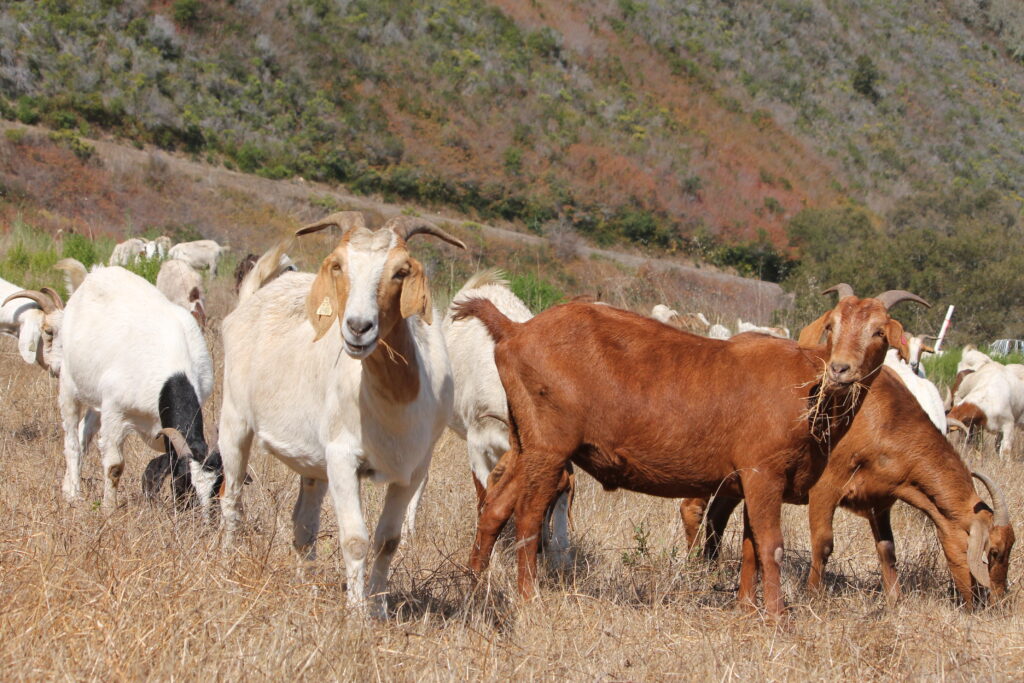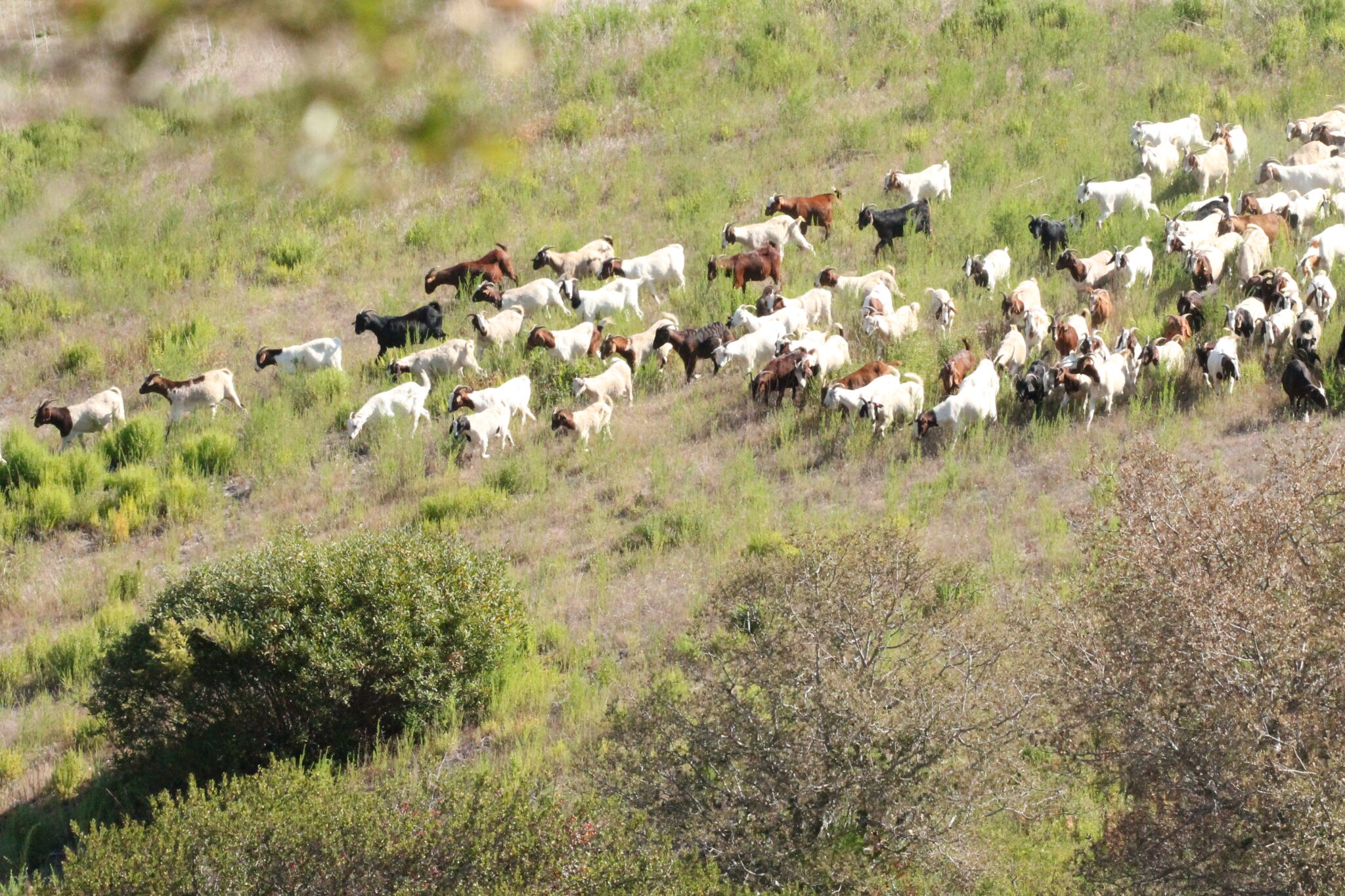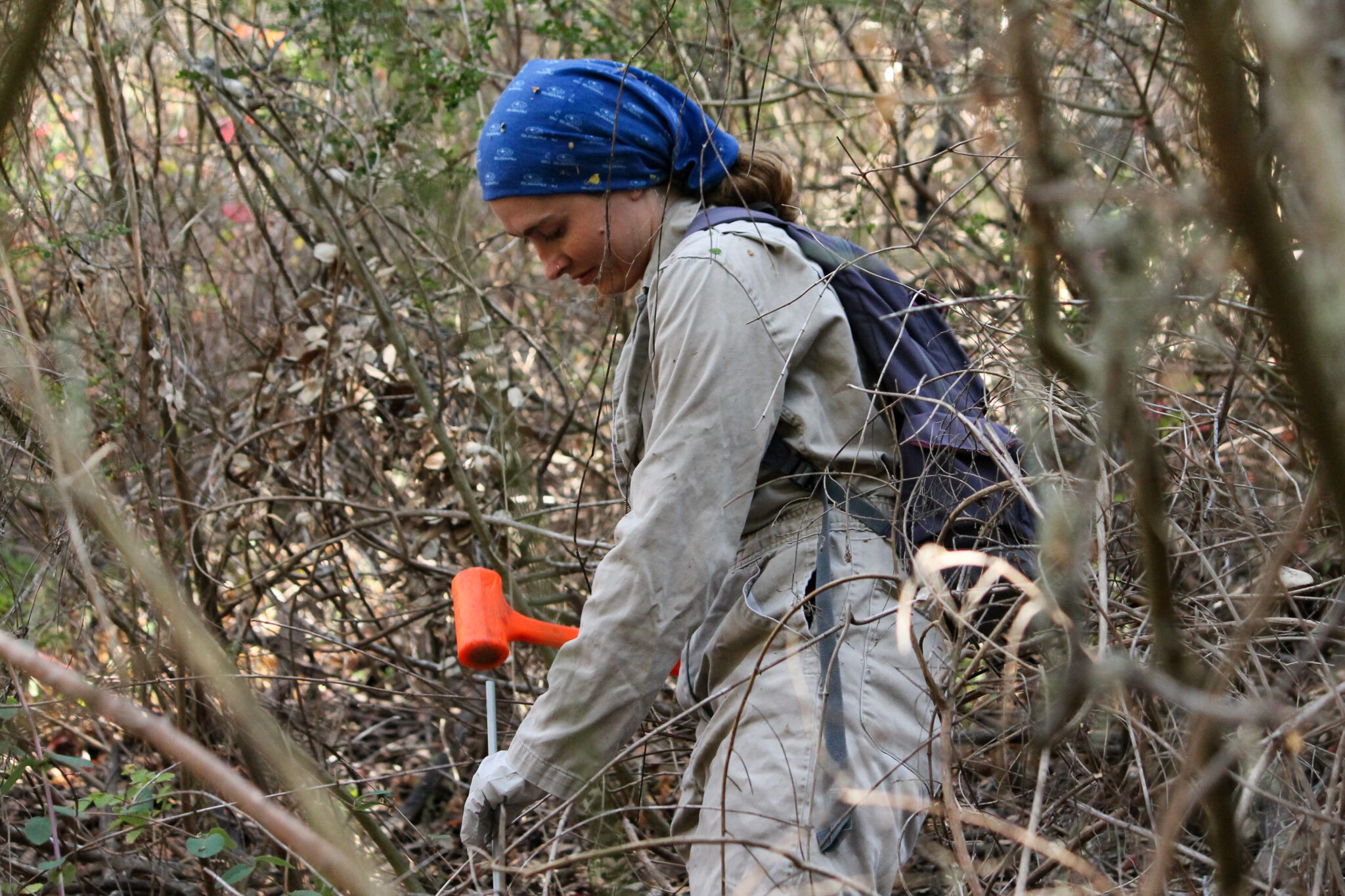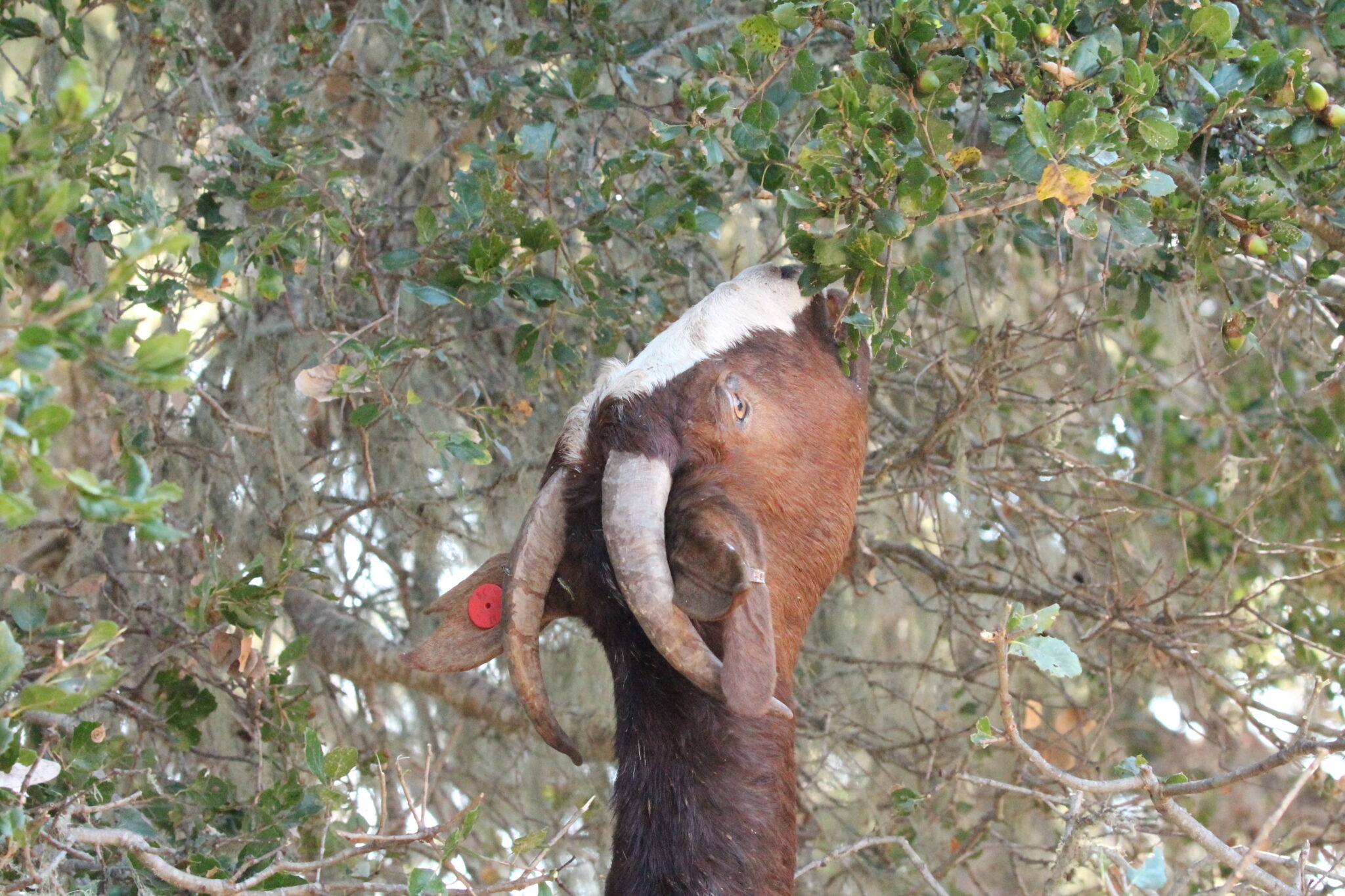Goats muching on grass in their first pasture on The Preserve. Photo by Alix Soliman.

800 Goats Forage to Reduce Fuels on The Preserve
September 14, 2022
By Alix Soliman, Communications & Outreach Coordinator
Last week, we welcomed 800 goats and an entourage of herders and dogs from Star Creek Land Stewards to conduct fuel reduction on The Preserve and help fulfill The Conservancy’s wildfire preparedness objectives. The goats will be foraging over the next few months in priority areas including Robinson Canyon, Potrero Canyon, Wild Boar Run, Mesa, and Corral Run. These areas were chosen for their proximity to our shaded fuel break work and dense understory growth, including highly invasive French broom (Genista monspessulana).
When it comes to preparing for wildfire, there are many ways to tackle dense vegetation known in fire-prone areas as “fuel.” In our grasslands, we circulate a herd of 121 cattle that break down a layer of dead plant matter called thatch. In our scrublands and chaparral, we’ve used prescribed fire to handle tall stands of coyote brush and invasive French broom. We masticate, mow, and weed whack to maintain wide fuel breaks so firefighters can access the interior of our forests and create shaded fuel breaks along roadsides for safe evacuation in the event of a wildfire.

Goats move into a new pasture on Wild Boar Run. Photo by Alix Soliman
Tailoring our tools to the areas they are being applied allows the Conservancy to be flexible in working towards our goal of creating a fire-permeable landscape. Ideally, this means that if a wildfire were to reach The Preserve, it would move through in an ecologically restorative way without threatening life, property, or unique and valuable natural resources.
Consuming a wider diet than our grass-loving cows and moving more nimbly through dense, woody habitats like chaparral and forests, the Conservancy is conducting an experiment to see if introducing goats to the Wildlands will help us efficiently manage fuels where cattle won’t graze, mastication can’t reach, and prescribed fire may not be logistically feasible.

Dr. Sabine Cudney hammers in a plot marker within a thick patch of poison oak and french broom. Photo by Alix Soliman
Conservation Ecologist Dr. Brian Woodward and Postdoctoral Fellow Dr. Sabine Cudney are monitoring plots within the Conservancy-owned Wildlands to measure vegetation density and composition before and after goat grazing. In addition, they are tagging plants including oak trees, French broom, and coyote brush at the edge of each plot to see how goats tackle specific plants and what their preferences are.
Goats can defoliate a high percentage of the plants in a given area, however, they can only eat plants up to four or five feet off the ground due to their small stature. During this extreme drought, we’re also curious to see how much of the woody brush they will gnaw or “girdle” and if significant girdling will kill shrubs and young trees in our priority areas.

A goat stands up on its hind legs to reach coast live oak leaves. Photo by Alix Soliman.
We have contacted Preserve landowners who may benefit from goat grazing to fulfill fuel management plan (FMP) objectives in the Openlands. Please contact Dr. Rodrigo Sierra Corona, Director of Ecological Management, at [email protected] with any questions.